
How to Use GSM SIM 900A: Examples, Pinouts, and Specs
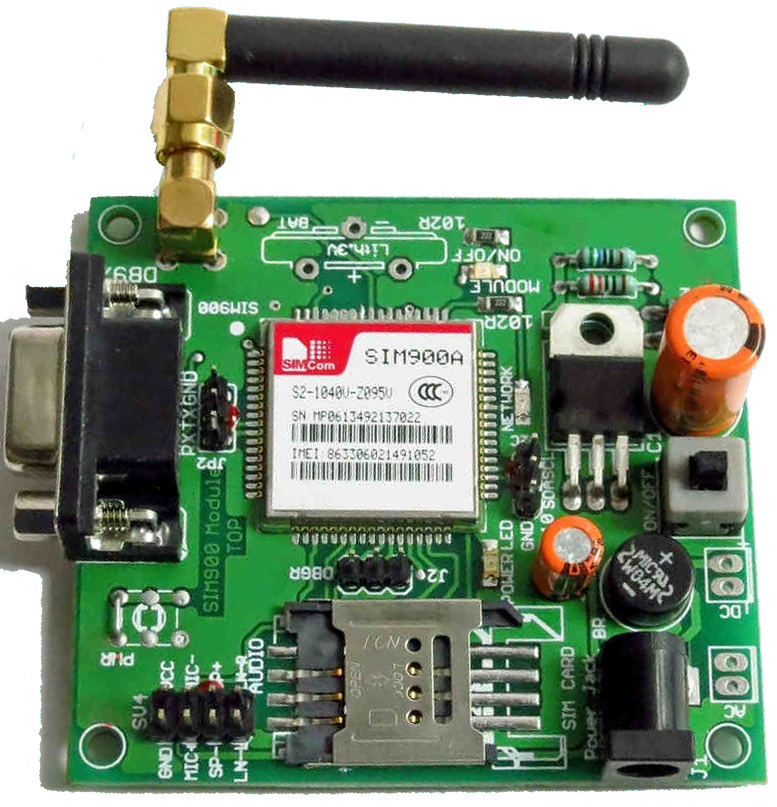
 Design with GSM SIM 900A in Cirkit Designer
Design with GSM SIM 900A in Cirkit DesignerIntroduction
The GSM SIM 900A is a compact and reliable GSM/GPRS module designed for communication over mobile networks. It supports dual-band GSM (900/1800 MHz) and provides functionalities such as sending and receiving SMS, making voice calls, and accessing the internet via GPRS. This module is widely used in IoT applications, remote monitoring systems, home automation, and other projects requiring wireless communication.
Explore Projects Built with GSM SIM 900A
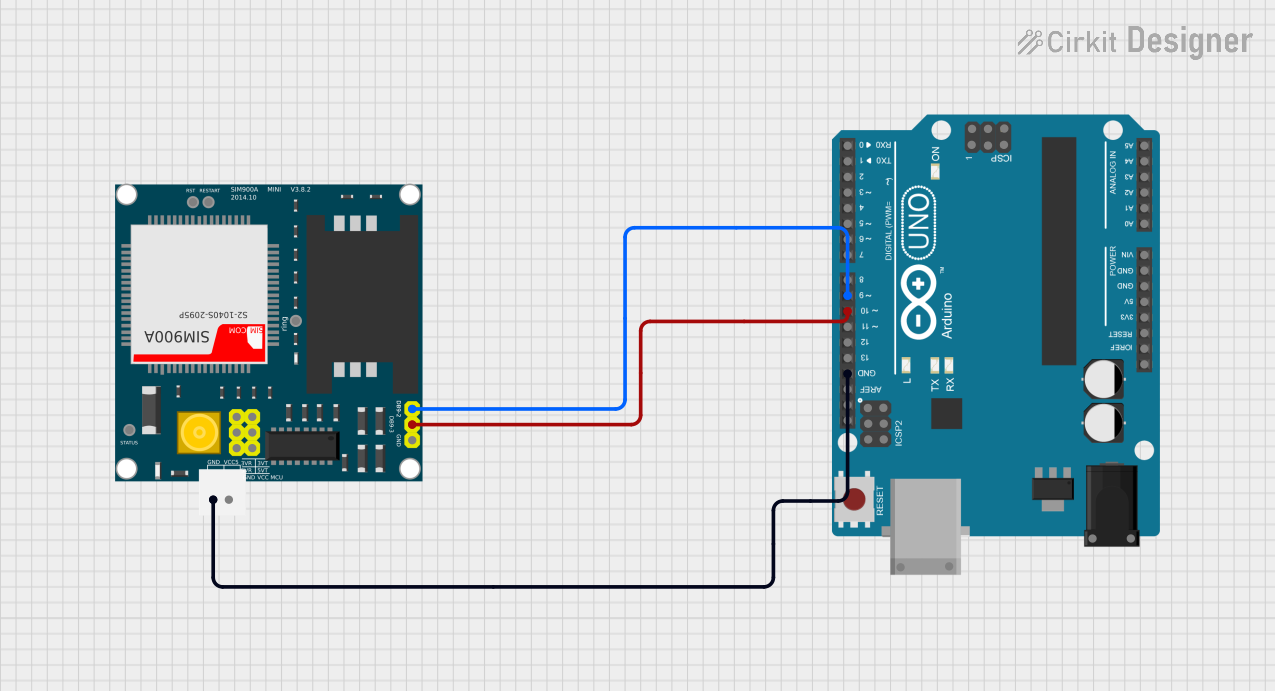
 Open Project in Cirkit Designer
Open Project in Cirkit Designer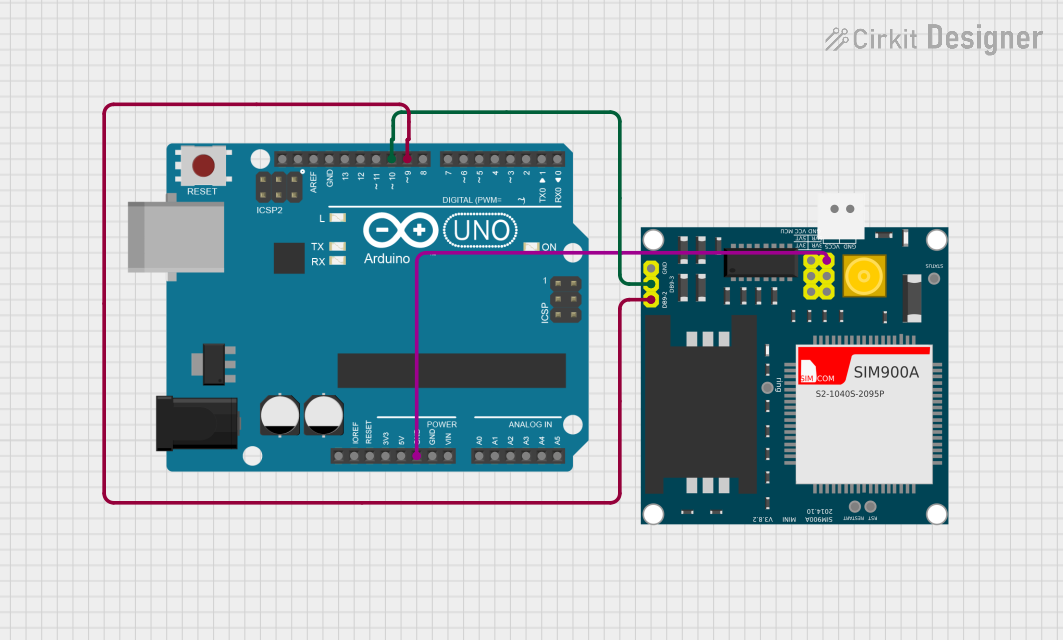
 Open Project in Cirkit Designer
Open Project in Cirkit Designer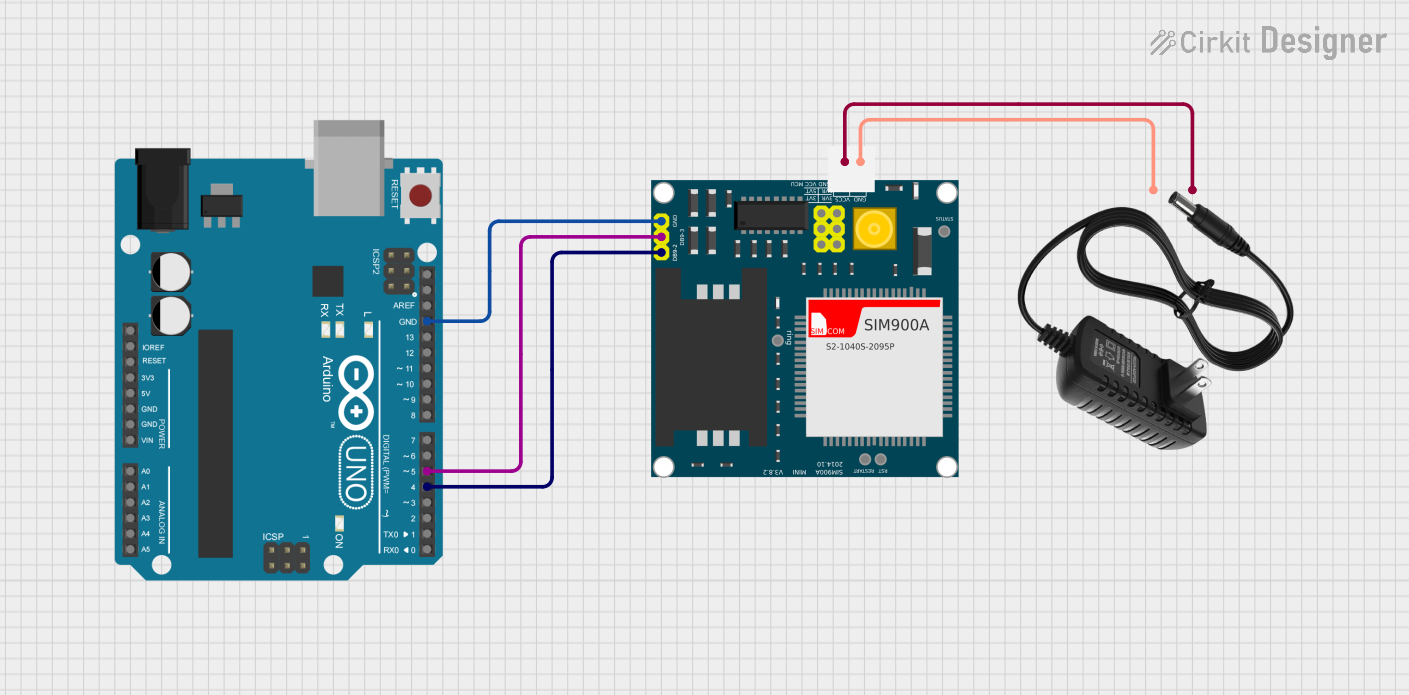
 Open Project in Cirkit Designer
Open Project in Cirkit Designer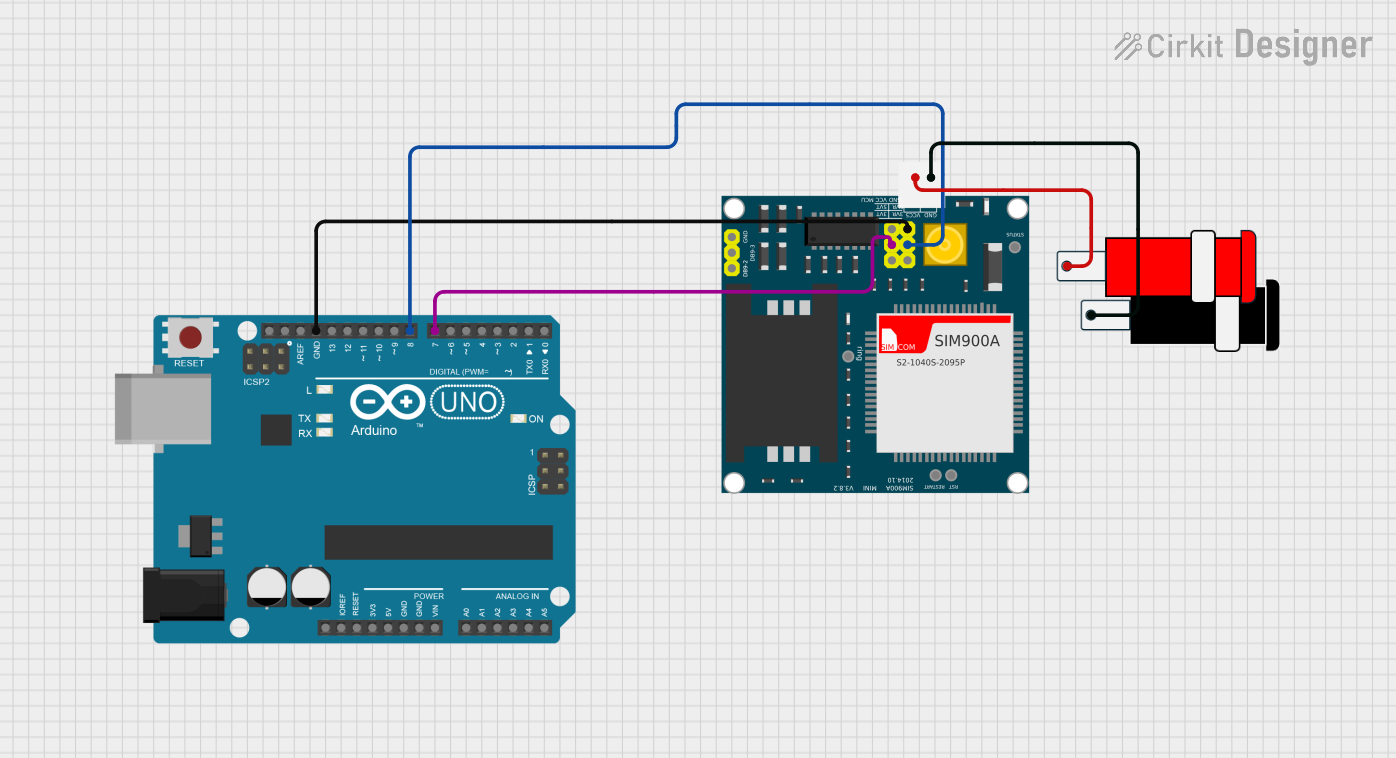
 Open Project in Cirkit Designer
Open Project in Cirkit DesignerExplore Projects Built with GSM SIM 900A

 Open Project in Cirkit Designer
Open Project in Cirkit Designer
 Open Project in Cirkit Designer
Open Project in Cirkit Designer
 Open Project in Cirkit Designer
Open Project in Cirkit Designer
 Open Project in Cirkit Designer
Open Project in Cirkit DesignerCommon Applications and Use Cases
- IoT devices for remote data transmission
- Home automation systems
- Vehicle tracking and fleet management
- SMS-based alert systems
- Wireless payment terminals
- Remote monitoring and control systems
Technical Specifications
The GSM SIM 900A module is designed to operate efficiently in a variety of environments. Below are its key technical details:
Key Technical Details
| Parameter | Specification |
|---|---|
| Operating Voltage | 3.2V - 4.8V (Typical: 4.0V) |
| Operating Current | Idle: ~20mA, Max: ~2A (during TX) |
| Frequency Bands | GSM 900/1800 MHz |
| Communication Protocols | GSM, GPRS (Class 10) |
| Data Rate (GPRS) | Uplink: 85.6 kbps, Downlink: 85.6 kbps |
| SIM Card Support | 1.8V/3V |
| Operating Temperature | -40°C to +85°C |
| Dimensions | 24mm x 24mm x 3mm |
Pin Configuration and Descriptions
The SIM 900A module typically comes with a breakout board for easier interfacing. Below is the pin configuration:
| Pin Name | Description |
|---|---|
| VCC | Power supply input (3.2V - 4.8V) |
| GND | Ground |
| TXD | Transmit data (UART output) |
| RXD | Receive data (UART input) |
| DTR | Data terminal ready (used for sleep mode) |
| RST | Reset pin (active low) |
| MIC+ | Microphone positive input |
| MIC- | Microphone negative input |
| SPK+ | Speaker positive output |
| SPK- | Speaker negative output |
| NET | Network status indicator (blinks to show status) |
Usage Instructions
The GSM SIM 900A module can be easily integrated into a circuit for wireless communication. Below are the steps and best practices for using the module:
Connecting the Module
- Power Supply: Ensure a stable power supply of 4.0V (typical). Use a capacitor (e.g., 1000µF) near the module to handle current surges during transmission.
- UART Communication: Connect the TXD and RXD pins to the UART pins of your microcontroller (e.g., Arduino UNO). Use a level shifter if your microcontroller operates at 5V logic.
- SIM Card: Insert a valid SIM card into the SIM slot. Ensure the SIM card is activated and has sufficient balance for SMS, calls, or data usage.
- Antenna: Attach a GSM antenna to the module for better signal reception.
Example: Using GSM SIM 900A with Arduino UNO
Below is an example of how to send an SMS using the GSM SIM 900A module and Arduino UNO:
Circuit Connections
- Connect the TXD pin of the SIM 900A to the RX pin of the Arduino.
- Connect the RXD pin of the SIM 900A to the TX pin of the Arduino.
- Connect the VCC and GND pins of the SIM 900A to a 4.0V power source and ground, respectively.
Arduino Code
#include <SoftwareSerial.h>
// Define RX and TX pins for SoftwareSerial
SoftwareSerial SIM900A(10, 11); // RX = Pin 10, TX = Pin 11
void setup() {
// Initialize serial communication
Serial.begin(9600); // For communication with the PC
SIM900A.begin(9600); // For communication with the SIM 900A module
Serial.println("Initializing GSM SIM 900A...");
delay(1000);
// Send AT command to check module response
SIM900A.println("AT");
delay(1000);
if (SIM900A.available()) {
Serial.println("Module is ready!");
} else {
Serial.println("No response from module. Check connections.");
}
// Send SMS
sendSMS("+1234567890", "Hello from GSM SIM 900A!");
}
void loop() {
// Nothing to do in the loop
}
void sendSMS(String phoneNumber, String message) {
SIM900A.println("AT+CMGF=1"); // Set SMS mode to text
delay(1000);
SIM900A.print("AT+CMGS=\""); // Start SMS command
SIM900A.print(phoneNumber); // Add recipient phone number
SIM900A.println("\"");
delay(1000);
SIM900A.print(message); // Add SMS content
delay(1000);
SIM900A.write(26); // Send Ctrl+Z to send the SMS
delay(5000);
Serial.println("SMS sent successfully!");
}
Best Practices
- Use a dedicated power supply for the module to avoid voltage drops during transmission.
- Place the antenna in an open area for better signal strength.
- Use proper level shifting if interfacing with 5V logic devices.
- Always test the module with basic AT commands before integrating it into a larger project.
Troubleshooting and FAQs
Common Issues and Solutions
No Response from the Module
- Ensure the module is powered correctly (4.0V typical).
- Check the UART connections (TXD to RX, RXD to TX).
- Verify the SIM card is inserted properly and activated.
Module Not Connecting to Network
- Check the antenna connection and ensure good signal strength.
- Verify the SIM card supports the GSM 900/1800 MHz bands.
- Ensure the SIM card has sufficient balance for network operations.
SMS Not Sending
- Confirm the module is in text mode (
AT+CMGF=1). - Verify the recipient's phone number format (e.g., include country code).
- Confirm the module is in text mode (
Frequent Restarts
- Check for voltage drops during transmission. Use a capacitor near the module.
- Ensure the power supply can handle peak currents (~2A).
FAQs
Q: Can the SIM 900A module be used for internet access?
A: Yes, the module supports GPRS for internet access. You can use AT commands like AT+SAPBR to configure and establish a GPRS connection.
Q: What is the maximum distance for UART communication?
A: UART communication is typically reliable up to a few meters. For longer distances, consider using RS-485 or other communication protocols.
Q: Can I use a 5V power supply for the module?
A: No, the module requires a power supply in the range of 3.2V to 4.8V. Using 5V directly may damage the module.
Q: How do I check the network signal strength?
A: Use the AT command AT+CSQ. The response will indicate the signal strength (e.g., +CSQ: 20,0).
By following this documentation, you can effectively integrate and troubleshoot the GSM SIM 900A module in your projects.